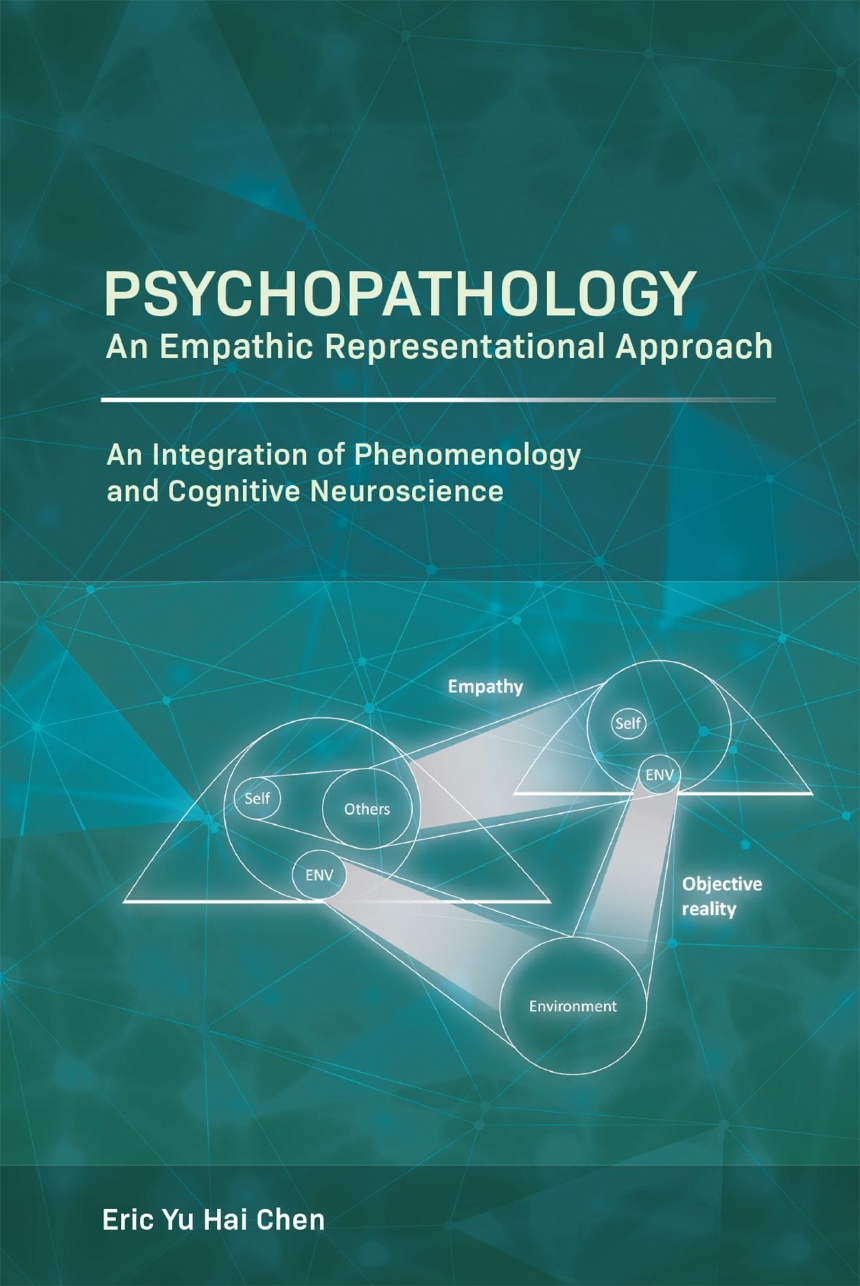Psychopathology
An Empathic Representational Approach; An Integration of Phenomenology and Cognitive Neuroscience
9789888842902
Distributed for Hong Kong University Press
Psychopathology
An Empathic Representational Approach; An Integration of Phenomenology and Cognitive Neuroscience
Explores how the scientific concepts of information and representation can be used to understand subjective mental phenomena and integrate them in empathic clinical dialogues during interactions with patients.
Psychopathology: An Empathic Representational Approach retraces the foundations of classical phenomenological psychopathology and integrates them with modern ideas drawn from anthropology, cognitive neuroscience, computational science, and evolutionary biology to synthesize a comprehensive framework and provide fresh insights. It explores key issues in clinical psychopathology coherently and systematically, illustrates advanced topics in an accessible manner using clinical case examples, metaphors, and clarifying diagrams, and directly links advanced conceptual frameworks with pragmatic skills in the clinical dialogue process.
This volume is aimed at a broad audience of mental health professionals, researchers, and students in psychiatry, psychology, and social work. Its interdisciplinary treatment of the subject will also interest biologists, anthropologists, cognitive psychologists, neuroscientists, and philosophers.
Psychopathology: An Empathic Representational Approach retraces the foundations of classical phenomenological psychopathology and integrates them with modern ideas drawn from anthropology, cognitive neuroscience, computational science, and evolutionary biology to synthesize a comprehensive framework and provide fresh insights. It explores key issues in clinical psychopathology coherently and systematically, illustrates advanced topics in an accessible manner using clinical case examples, metaphors, and clarifying diagrams, and directly links advanced conceptual frameworks with pragmatic skills in the clinical dialogue process.
This volume is aimed at a broad audience of mental health professionals, researchers, and students in psychiatry, psychology, and social work. Its interdisciplinary treatment of the subject will also interest biologists, anthropologists, cognitive psychologists, neuroscientists, and philosophers.
Table of Contents
Detailed Analyses of Contents viii
List of Figures xiii
Foreword by German E. Berrios xvi
Preface xxii
Acknowledgements xxiv
Introduction 1
1. The Problem of Psychopathological Knowledge 5
1.1 Can We Really Approach Psychopathology Empirically? 5
1.2 A Phenomenological Approach to Subjective Experiences 9
1.3 Some Cognitive Approaches to Subjective Phenomena 10
1.4 Summary: A Coherent Approach for Psychopathology? 11
2. Information in the Brain and Subjective Experiences 15
2.1 Overview 15
2.2 What Does Information Mean in Physical, Biological, and Semantic
Systems? 16
2.3 Mental Representations Are Containers of Information 27
2.4 Evolutionary Perspective of Information Handling in the Brain 33
2.5 Major Types of Information Handled in the Human Brain 38
2.6 Information Exchange in Human Groups 44
2.7 Information and the Relational Nature of Human Experience 47
3. The Structure of Subjective Experience 50
3.1 Introduction to a Phenomenological Perspective 50
3.2 Cogito Sum as the Starting Point of Phenomenology 50
3.3 Temporality of Human Experience 51
3.4 Atomic Unit of Experience 52
3.5 Convergence: The ‘Relational’ (Intentional) Nature of Human
Experience 55
4. Unfolding Phenomenological Processes in the Human Person 58
4.1 Engaging with Life Experiences 58
4.2 Choice and Agency 61
4.3 The Fullness of Experience in Health and Illness 65
4.4 The Person and the Body 66
4.5 Representing the Body and Representing Others 67
5. Empathic Access to Other People 69
5.1 Representing Others and the Phenomenon of Empathy 69
5.2 Shared Meaning in Subjective Experience 75
5.3 Representation of Reality in a Group 77
6. Mental Representations as Containers for Information in Subjective
Experiences 80
6.1 Development of Mental Representations 80
6.2 Representations in a Coherent Experience 82
6.3 Mental Representations of Objects 85
6.4 Domains of Experiences Represented 93
6.5 Motivation and Causality 102
6.6 Basic Computations Acting on Representations 107
6.7 Mental Operations from a Representational Perspective 113
7. Representation Failure and Psychopathology 116
7.1 Constraint Satisfaction Failures 116
7.2 Lateral Inhibition Failures 120
7.3 Top-down Priming Biases 120
7.4 Catastrophe Dynamics 121
7.5 Spurious Attractors 123
7.6 ‘Latent’ Computational Fragments 127
8. Towards a New Representational Framework in Psychopathology 129
8.1 Disorders of Relating 130
8.2 Disorders of Agency 133
8.3 Disorders of Persons Representation 137
8.4 Disorders of Interactions between Representations 143
8.5 Self-replicating Ideas in the Mind 144
8.6 What Does It Mean for Ideas to Be Meaningful? 145
8.7 Disorders of Offline Updating 148
8.8 Disorder in Inter-individual Information Transfer 149
8.9 Developmental Perspectives in Psychopathology 152
8.10 Summary 155
9. Psychopathological Evaluation: The Clinical Dialogue 157
9.1 Overview 157
9.2 Preparations for Clinical Dialogues 158
9.3 The Clinical Dialogue Cycle 162
9.4 Handling Clinical Categories 170
9.5 Unpacking Patient’s Accounts 172
9.6 Techniques in the Clinical Dialogue 174
9.7 Structure of the Clinical Dialogue 183
9.8 Authenticity and Openness 190
Conclusions 191
References 193
Index 212
List of Figures xiii
Foreword by German E. Berrios xvi
Preface xxii
Acknowledgements xxiv
Introduction 1
1. The Problem of Psychopathological Knowledge 5
1.1 Can We Really Approach Psychopathology Empirically? 5
1.2 A Phenomenological Approach to Subjective Experiences 9
1.3 Some Cognitive Approaches to Subjective Phenomena 10
1.4 Summary: A Coherent Approach for Psychopathology? 11
2. Information in the Brain and Subjective Experiences 15
2.1 Overview 15
2.2 What Does Information Mean in Physical, Biological, and Semantic
Systems? 16
2.3 Mental Representations Are Containers of Information 27
2.4 Evolutionary Perspective of Information Handling in the Brain 33
2.5 Major Types of Information Handled in the Human Brain 38
2.6 Information Exchange in Human Groups 44
2.7 Information and the Relational Nature of Human Experience 47
3. The Structure of Subjective Experience 50
3.1 Introduction to a Phenomenological Perspective 50
3.2 Cogito Sum as the Starting Point of Phenomenology 50
3.3 Temporality of Human Experience 51
3.4 Atomic Unit of Experience 52
3.5 Convergence: The ‘Relational’ (Intentional) Nature of Human
Experience 55
4. Unfolding Phenomenological Processes in the Human Person 58
4.1 Engaging with Life Experiences 58
4.2 Choice and Agency 61
4.3 The Fullness of Experience in Health and Illness 65
4.4 The Person and the Body 66
4.5 Representing the Body and Representing Others 67
5. Empathic Access to Other People 69
5.1 Representing Others and the Phenomenon of Empathy 69
5.2 Shared Meaning in Subjective Experience 75
5.3 Representation of Reality in a Group 77
6. Mental Representations as Containers for Information in Subjective
Experiences 80
6.1 Development of Mental Representations 80
6.2 Representations in a Coherent Experience 82
6.3 Mental Representations of Objects 85
6.4 Domains of Experiences Represented 93
6.5 Motivation and Causality 102
6.6 Basic Computations Acting on Representations 107
6.7 Mental Operations from a Representational Perspective 113
7. Representation Failure and Psychopathology 116
7.1 Constraint Satisfaction Failures 116
7.2 Lateral Inhibition Failures 120
7.3 Top-down Priming Biases 120
7.4 Catastrophe Dynamics 121
7.5 Spurious Attractors 123
7.6 ‘Latent’ Computational Fragments 127
8. Towards a New Representational Framework in Psychopathology 129
8.1 Disorders of Relating 130
8.2 Disorders of Agency 133
8.3 Disorders of Persons Representation 137
8.4 Disorders of Interactions between Representations 143
8.5 Self-replicating Ideas in the Mind 144
8.6 What Does It Mean for Ideas to Be Meaningful? 145
8.7 Disorders of Offline Updating 148
8.8 Disorder in Inter-individual Information Transfer 149
8.9 Developmental Perspectives in Psychopathology 152
8.10 Summary 155
9. Psychopathological Evaluation: The Clinical Dialogue 157
9.1 Overview 157
9.2 Preparations for Clinical Dialogues 158
9.3 The Clinical Dialogue Cycle 162
9.4 Handling Clinical Categories 170
9.5 Unpacking Patient’s Accounts 172
9.6 Techniques in the Clinical Dialogue 174
9.7 Structure of the Clinical Dialogue 183
9.8 Authenticity and Openness 190
Conclusions 191
References 193
Index 212

